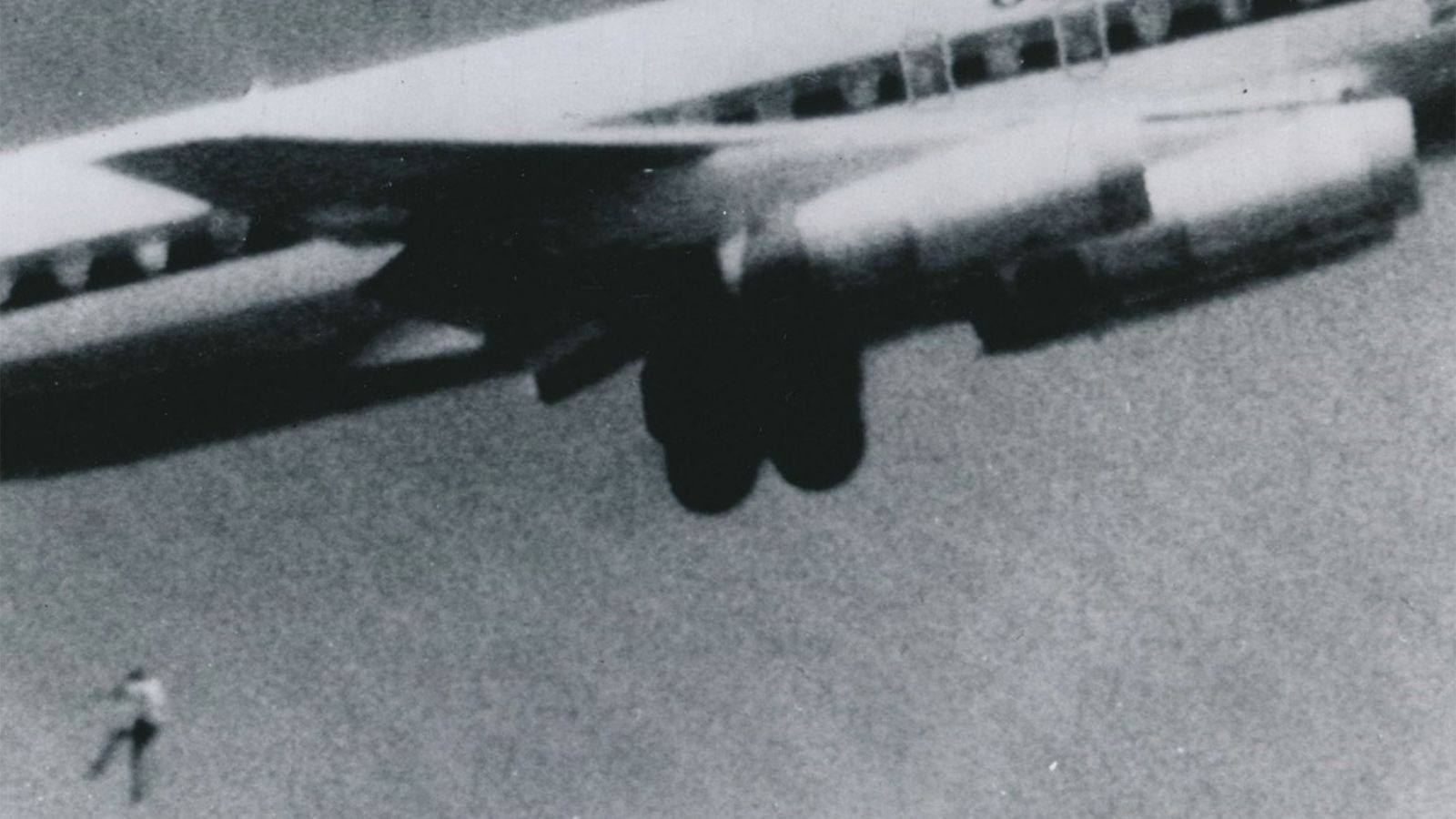Aircraft Stowaways
Charting the routes of all known Aircraft Stowaways since 1946


Aircraft Stowaways
SizeSmall
TypeMap
AreaAviation
This project charts the routes of all known aircraft stowaways: individuals who fled their countries by hiding in the landing gear compartment of an aircraft.
These are epic and desperate journeys. Cramped, frozen and deprived of oxygen, few stowaways make it to their destinations alive. For those that do, the future is uncertain.
The first recorded wheel bay stowaway was 12 year old orphan Bas Wie, who travelled from Kupang, Indonesia to Darwin, Australia in the wheel bay of a Douglas DC-3 in 1946.
He survived.
What we did
Design
Development
Editorial
Research






Since 12 year old Bas Wie fled war-torn Indonesia for a safer life in Australia, there have been 88 further recorded incidents of wheel bay stowaways. Allowing for those who fell from the plane in transit, and those (if any) who survived the journey and escaped undetected, the real number may be even higher.
This is not a cheap ticket. Over three quarters of those who attempt to stowaway in an aircraft’s undercarriage perish, and the survival of the few successful stowaways confounds scientific understanding of human endurance. Yet for a few brave, reckless souls, driven by an acute need to escape unbearable hardship, seek freedom or see the world, the risks are worth it.
These desperate journeys do not fit neatly into familiar narratives about migration. They are not about whole communities displaced, nor heroic tales of derring do. Instead, they are stories about individuals — almost always men, almost always alone — risking everything to travel. But, plotted onto a single map, these stories’ unique plots and protagonists describe the tragedy of global inequality. The map reveals the areas of the world from which people flee, and the places they’ll risk everything to get to.
Catching a ride in the underbelly of an aeroplane isn’t easy. First, the stowaway must negotiate airport security, locate the plane, haul themselves into the wheel well and wedge themselves into a very small, specific space. As the plane taxis and takes off, the stowaway must cling to part of the plane’s inner structure to avoid falling through the wheel opening. Then as the landing gear folds up and into the wheel bay, the stowaway must avoid being crushed or burnt by the aircraft’s tyres.
Long distant passenger flights usually cruise at about 38,000 feet. Atmospheric pressure, which affects the partial pressure of oxygen, decreases as the plane gains altitude. By 8,000 feet, the lack of oxygen in the unpressurised wheel bay will start to cause serious illnesses including first hypoxia, then decompression sickness and pulmonary and cerebral edema. At just 15,000 feet — well before the aircraft reaches cruising altitude — the lack of oxygen will cause the stowaway to lose consciousness.
The stowaway also has to cope with extreme temperatures. Humans usually expire once their body temperature falls below 21 degrees celsius. Outside a cruising airliner, the air temperature can fall to -63 degrees celsius, causing the stowaway severe frostbite, or, frequently, causing them to freeze to death.
As the aircraft descends, temperatures and oxygen levels rise. If the stowaway has somehow survived the flight so far they may, incredibly, be revived by warming conditions as the plane prepares to land. Some stowaways, having survived the cruising altitude, but with their motor skills impaired, can’t secure themselves and fall from the aircraft as the landing gear is lowered. Some, including José Matada, whose frozen body fell from a plane approaching London’s Heathrow airport onto a suburban street in 2012 are eventually identified. But an untold number of other stowaways may have fallen frozen into the sea uncounted, their risk unrewarded, and their stories lost forever.